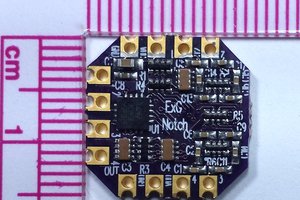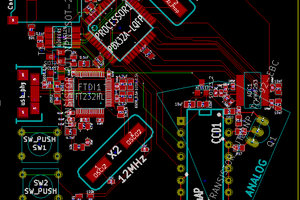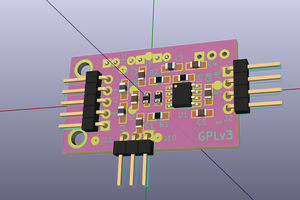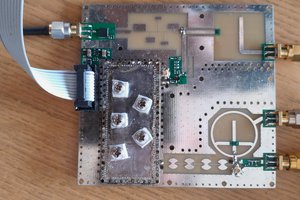This board is part of Fyber Labs Flex Module project.
Biopotential signals are low frequency small voltage output that need very clean power and low cross-talk routing.
Example signal types(source):
- EEG:
Surface 5 mV 200Hz
Scalp 300uV 100Hz - EMG:
On skin 10 uVpp-1mVpp, 10Hz-1kHz - EOG:
Frontal skull 100uVpp-1mVPP 10Hz-1kHz - ECG:
Chest 10 uVpp-10mVpp, 0.1-100Hz
The board utilizes a Sallen-Key 2nd order low pass filter that can be set for filtering fc at 100Hz(16KOhm arrays).
Summing amplifier configuration allows for -3.3V to +3.3V signal conversion to 0-3.3V for ADC. Right now there is no actual amplification of the Plessey sensor until testing can be done. Additional digital filtering will likely be required as well.
Any software related will be released under BSD or MIT license. SAAS or cloud based software will be AGPL.
 Chris Hamilton
Chris Hamilton





 JasMoH
JasMoH
 michal777
michal777
Are there any schematics for this board? I've been working with EEG and I'd love to design a headset so I could map my mental states while sleeping